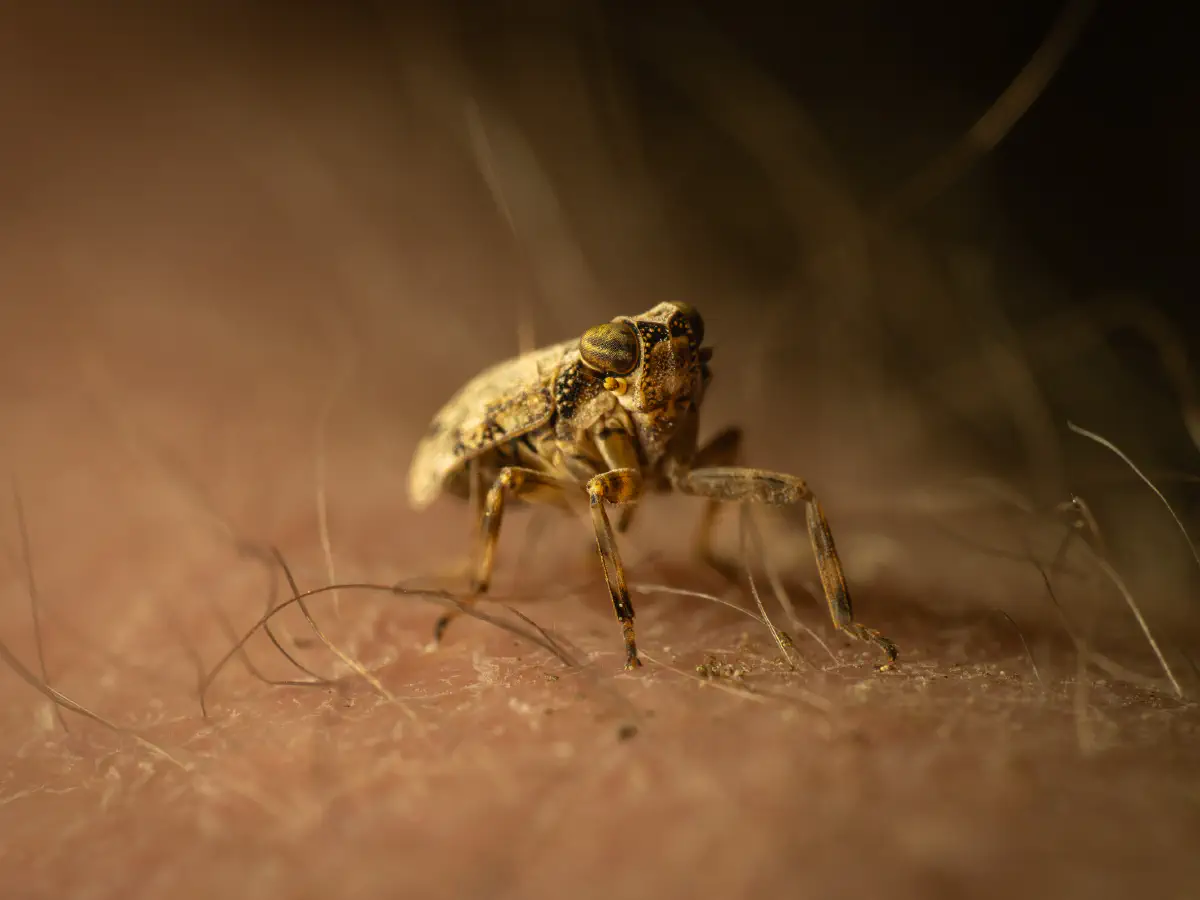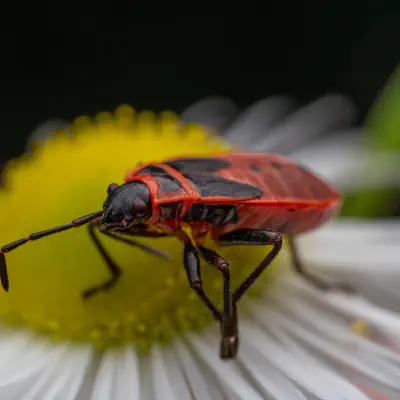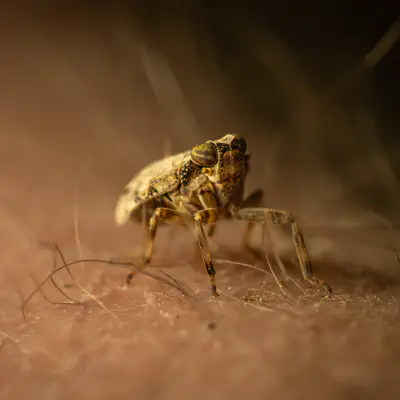This common species can be found in the western Palearctic realm, in the Near East, and in North Africa. These insects live on shrubbery and on foliage of various woody plants and common deciduous trees and in mixed forests (forest edges and parks).
Issus coleoptratus (lat. Issus coleoptratus)




This is not intended to be a dry lexicon. Personal stories and sensitive articles form the framework for our pictures: „Fabulously red against clichés“
There are many prejudices about insects. Bernd, the fire bug says "Don't believe everything you hear!"


